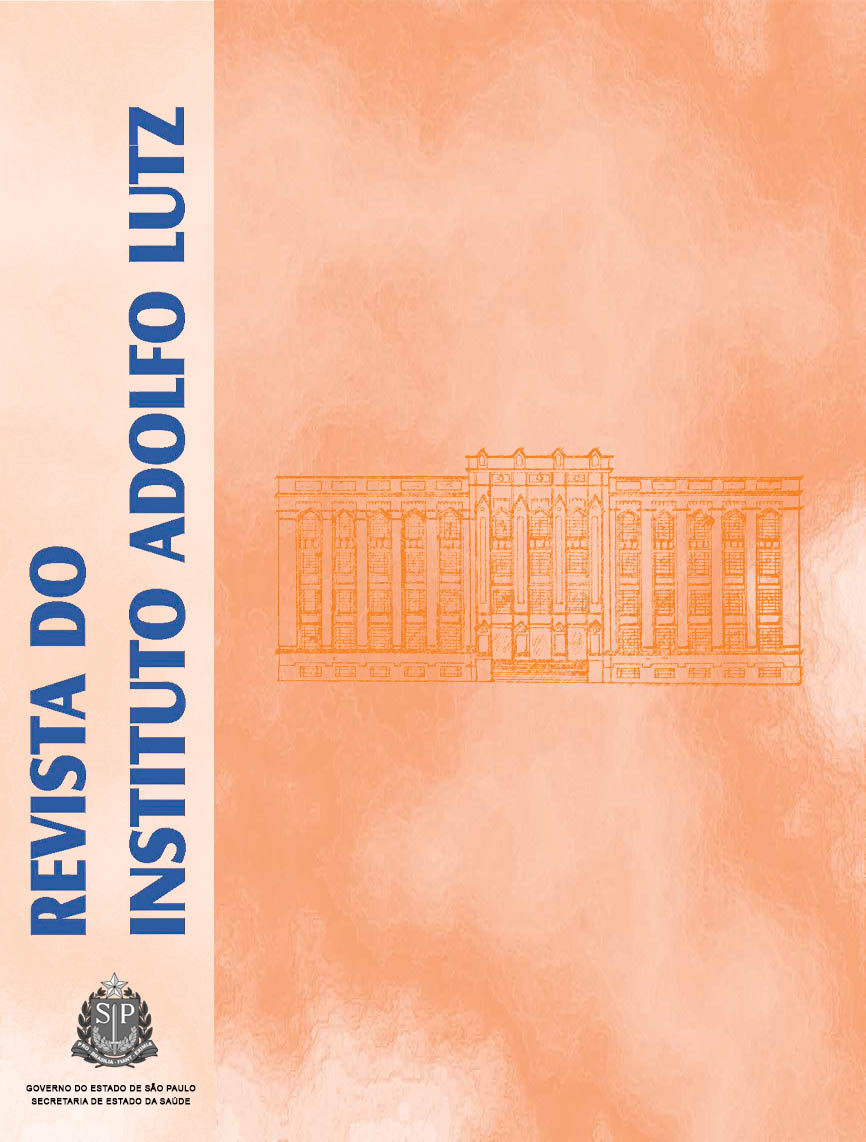Abstract
The differentiation of the pathogen that cause amebiasis has turned to be relevant since Entamoeba histolytica (pathogenic) has been considered as a distinct species from Entamoeba dispar (non-pathogenic). In the present study E. histolytica antigens were investigated in stool samples from children of São Leopoldo, Rio Grande do Sul, Brazil, by means of a commercially available enzyme-linked immunosorbent assay, ELISA (E. histolytica Test, TechLab Inc., Blacksburg, USA). A total of 262 fecal samples were analyzed by Hoffman, Pons and Janer method, and three samples showed positive result for E. histolytica/E. dispar complex. Of 262 samples, 91 (including those positive on Hoffman, Pons and Janer method) were analyzed by ELISA. The discrepancy of results on coproparasitologic exam and on ELISA was detected as all fecal samples were negative on ELISA, indicating the presence of E. dispar but not of E. Histolytica in those three positive samples on HPJ technique. These data point out the relevance in employing a highly specific technique for performing the identification and differentiation of intestinal amebiasis.References
1. Braga LLBC, Gomes ML, Silva MW, Paiva C, Sales A,Mann BJ. Entamoeba histolytica and Entamoeba dispar infections as detected by monoclonal antibody in anurban slum in Fortaleza, Northeastern Brazil. Rev Soc Bras Med Trop 2001; 34 (Suppl 5): 467-71.
2. Cimerman B, Cimerman S. Parasitologia Humana e seus Fundamentos Gerais 2nd ed. São Paulo:Ed. Atheneu; 2001.
3. Delialioglu N, Aslan G, Sozen M, Babur C, Kanik A,Emekdas G. Detection of Entamoeba histolytica/Entamoeba dispar in stool specimens by using enzyme-linked immunosorbent assay. Mem Inst Oswalo Cruz2004; 99 (Suppl 7): 769-72.
4. Maciel A, Dourado A, Aca IS. Ocorrência de Entamoebahistolytica/Entamoeba dispar em pacientes ambulatoriais de Recife, PE. Rev Soc Bras Med Trop2006; 39 (Suppl 4): 388-9.
5. Wiebbeling AMP, Santos DE, Mezzari A. Parasitasintestinais: aspectos gerais e prevalência em um escola da periferia de Porto Alegre – RS. News lab 2003;60: 118-34.
6. Redondo RB, Méndez LGM, Baer G. Entamoebahistolytica and Entamoeba dispar: differentiation byenzyme-linked immunosorbet assay (ELISA) and itsclinical correlation in pediatric patients. Parasitologia Latinoamericana 2006; 61: 37-42.
7. Wold Health Organization. Entamoeba taxonomy. BullWHO 1997; 75 (Suppl 3): 291-2.
8. Abd-Alla MD, Ravdin JI. Diagnosis of amoebic colitisby antigen capture ELISA in patients presenting acute diarrhea in Cairo, Egypt. Trop Med Intern Health 2002;7: 365-70.
9. Zaki M, Meelu P, Sun W, Clark CG. Simultaneous differentiation and typing of Entamoeba histolyticaand Entamoeba dispar. J Clin Microbiol 2002;40 (Suppl 4): 1271-6.
10. Uecker M, Copetti CE, Polize L, Flores V. Infecções parasitárias: diagnóstico imunológico de enteroparasitoses. RBAC 2007; 31 (Suppl 1): 15-19.
11. Nozaki T, Aca IS, Okuzana E, Magalhães M, Tateno S,Takeuchi T. Zymodemes of Entamoeba histolytica, isolated in Amazon and the Northeast Regions of Brazil. Trans R Soc Trop Med Hyg 1990; 84: 387-8.

This work is licensed under a Creative Commons Attribution 4.0 International License.
Copyright (c) 2007 Instituto Adolfo Lutz Journal
